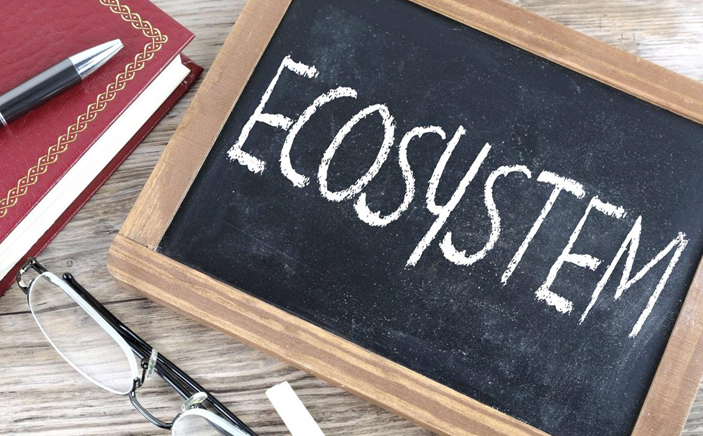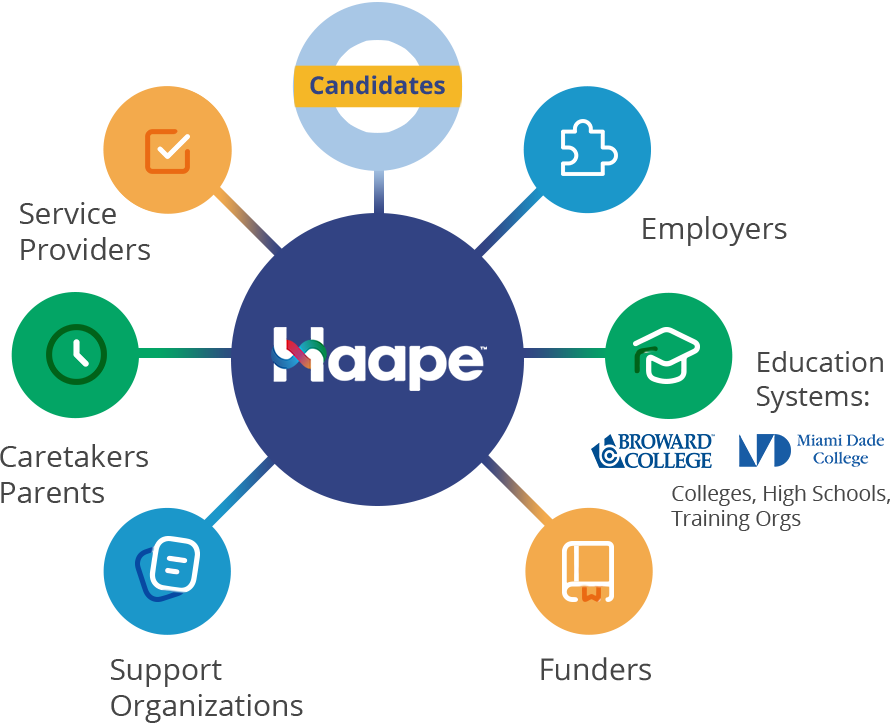The HAAPE Autism

Welcome to HAAPE‘s Autism Workforce Ecosystems!
Our mission is to establish a nationwide network of Autism Workforce Ecosystems dedicated to fostering meaningful and sustainable employment opportunities for individuals on the Autism Spectrum.
At HAAPE, we believe in the power of collaboration and community to create positive change. Our ecosystems serve as hubs of key stakeholders, bringing together employers, educators, service providers, policymakers, and individuals with autism spectrum disorder (ASD) to create “friction-free” resources tailored to the specific needs of their local communities.
By connecting these ecosystems over time, we aim to empower individuals with ASD to lead independent lives by providing access to the necessary support, resources, and opportunities for employment and career advancement.
Join us in building a more inclusive and supportive workforce ecosystem where every individual, regardless of their neurodiversity, can thrive and contribute their unique talents and abilities. Together, we can create a brighter future for individuals with ASD and their communities.
What’s an Autism Workforce Ecosystem?
An Autism Workforce Ecosystem is a network of individuals and organizations operating in cooperation and unified interaction to help educate, train, and/or employ eligible autistic adults with an established goal of providing sustainable and meaningful career opportunities and an independent lifestyle.
Why is it Vital to Create
Autism Workforce Ecosystems?

Diverse Perspectives and Innovation:
Autistic/Neurodiverse individuals often possess unique perspectives and cognitive strengths that can lead to innovative solutions and approaches. By including autistic individuals in the workforce, organizations can tap into this diversity of thought, fostering creativity and driving innovation.

Talent Acquisition and Retention:
Embracing neurodiversity in the workplace expands the talent pool and allows organizations to attract and retain individuals with valuable skills and talents. Creating an inclusive environment where autistic employees feel valued and supported can enhance overall employee satisfaction and loyalty.

Enhanced Problem-Solving Abilities:
Autistic individuals may excel in certain areas such as pattern recognition, attention to detail, and analytical thinking. Leveraging these strengths can lead to improved problem-solving abilities within teams and across the organization.

Improved Productivity and Performance:
When provided with appropriate accommodations and support, neurodiverse employees can thrive in the workplace, contributing to increased productivity and performance. By removing barriers to success.

Autism Workforce Ecosystem joins key stakeholders:
To form community solutions for underserved adult residents with intellectual disabilities looking for education, training and career job opportunities and capitalizing on individual strengths, organizations can optimize their workforce’s overall effectiveness.

Social Responsibility and Ethical Considerations:
Building autistic workforce ecosystems aligns with principles of social responsibility and ethical business practices. Embracing diversity and inclusion demonstrates a commitment to fairness, equality, and respect for all individuals, regardless of their neurodiverse status.

Legal and Regulatory Compliance:
Many jurisdictions have regulations and laws in place that require organizations to provide reasonable accommodations for individuals with disabilities, including neurodiverse conditions. Building neurodiversity-friendly workplaces ensures compliance with these legal and regulatory requirements, mitigating the risk of discrimination claims and legal penalties.

Positive Organizational Culture:
Creating an inclusive culture that celebrates neurodiversity promotes a sense of belonging and acceptance among all employees. This, in turn, can foster higher morale, stronger team dynamics, and a more positive organizational culture overall.
What are the Elements of an
Autism Workforce Ecosystems?
Workforce Development, Support, and Training:
- HAAPE’s Autism Workforce Ecosystem joins key stakeholders to form community solutions for underserved adult residents with intellectual disabilities looking for education, training, and career job opportunities.
- At the heart of the ecosystem is HAAPE along with a like-minded nonprofit organization and/or education institution(s).
- Key stakeholders include educational institutions, other nonprofits, support groups, employers, recruits and their families, local government, and community entities.
- HAAPE’s Autism Workforce Ecosystem may be tailored to the needs of a given community/geography and may include housing, transportation, and health elements.
Here is an example of one of HAAPE’s Ecosystems.
Southeast Autism Coalition: Autism Workforce Ecosystem.

Scholarly Work on Autism Workforce Ecosystems
Abstract:
Relatively little is yet known about employment readiness and elements that promote access to, and the retention of, employment for adults with autism spectrum disorder (ASD). This paper posits elements within the ecosystem of employment and ASD. The ecosystem approach locates employment among persons with ASD as inextricably linked with broader community resources, family support, workplace capacity building (e.g., employer, co-workers) and policy.
Application of the approach is offered through process evaluation data yielded from an ecosystem-informed job readiness program entitled, ‘EmploymentWorks Canada’. Findings illustrate job readiness in the context of the broader ecosystem that envelopes salient components in the aim of community engagement and quality of life. Recommendations are offered for community-based applications and for program and research development.
Additional Relevant Papers:
Malvina Klag, David Nichola, and Solène MétayerView all authors and affiliations Volume 102, Issue 4, https://doi.org/10.1177/10443894211017397
An Ecosystem Approach to Employment and Autism Spectrum Disorder
- David B Nicholas,
- Wendy Mitchell,
- Carolyn Dudley,
- Margaret Clarke,
- Rosslynn Zulla
Journal of Autism Development Disorders,
2018 Jan;48(1):264-275.
doi: 10.1007/s10803-017-3351-6.
Have a question?
Check out our frequently asked questions here or contact us directly and a HAAPE team member will be happy to help!
Frequently Asked Questions
Ask us a Question Directly


 Based in USA
Based in USA